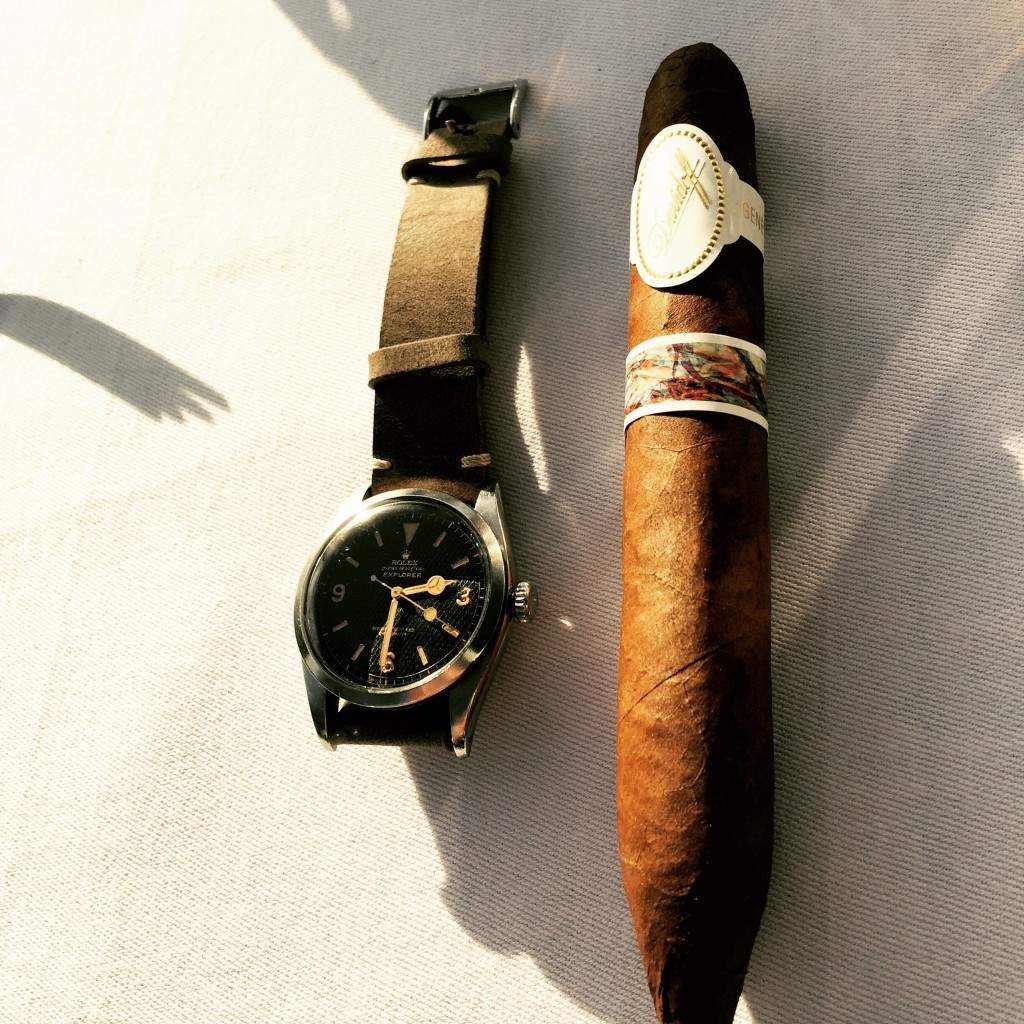
When you think of vintage Rolex it is likely that you think of Submariner, GMT or the legendary Daytona. For some reason the Explorer comes last.
This should not be the case.
For collectors who appreciate history and rarity the Explorer is perhaps more interesting and rewarding than any other line within Rolex.
It is worth reminding collectors that the Explorer line has a richer history than either the submariner or the GMT. The Explorer line was registered by Rolex in January 1953, before the submariner (1954) and also before the GMT Line (1954/55).
While many believe that Rolex launched the Explorer due to Rolex supplying watches to Sir Hillary and Norgay who climbed Mount Everest in 1953 – this was not the case.
Rolex simply supplied some Explorers to the expedition but the line had existed before 1953 (with references 6150 and 6098, 6298). But the first watch to carry the Explorer name on the dial was the reference 6350 (main picture above) and this was launched also in 1953 – the same year that Hillary successfully climbed Mount Everest.
Rolex- the clever marketing company- of course then linked the Explorer watch with these successful watch climbers (see ad below) – and from then on the Explorer would be identified with Hillary & Co.
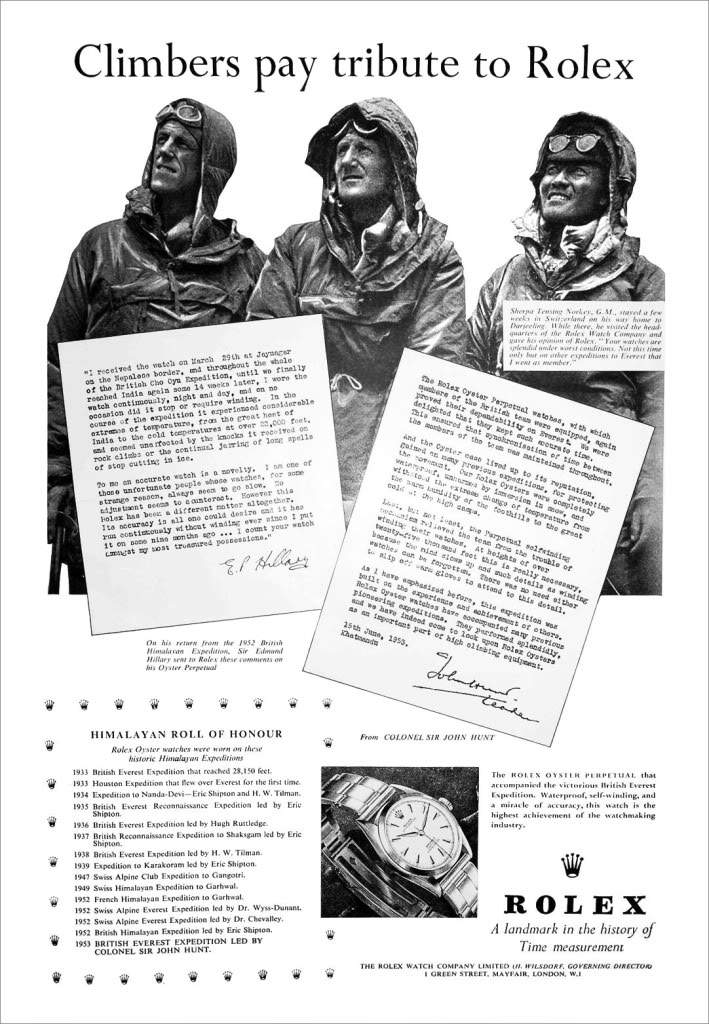
Credit: Jakes Rolex watch blog
Background information on Explorers in general
The explorer owes its existence to Rolex’s efforts to improve their waterproof cases (Rolex was the first brand to make their watches water proof-thus the Oyster designation) and improve the robustness of the case.
The origins of the Explorer stems from the ‘Bubbleback’ watches, as the ‘Bubbleback’ Rolex was extremely tough and solid. After several early explorer models like the 6150 and 6098, Rolex officially carried the ‘Explorer’ designation on the dial with the 6350 model in 1953.
The 6350 model is itself an improvement of the ref 6150 which was an earlier model with only the word ‘precision’ on the dial.
For our in-depth report we will be concentrating on the first Rolex Explorer that actually had the name ‘Explorer’ on the dial (we will be focussing on the rare ‘honeycomb’ version).
In the vintage Rolex world- the 6350 Honeycomb, is without a doubt, one of the most beautiful and collectible models to own. However much like other early and important Rolex models not much has been written on the Explorer 6350 in general let- alone the sought after honeycomb version.
This report is an attempt to change that.

Rolex Explorer 6350 / Dial
Before we go into the ‘honeycomb’ 6350, a quick word on the 6350 Explorer in general.
Most of the 6350 explorers carried a dial that was a chapter ring, gilt dial and black gloss much like the previous models 6150. The normal 6350 Explorer dial are also very collectible and beautiful (see picture here)*. However Rolex also made several special versions of the 6350 that carried an unusual, rare and textured dial known as the honeycomb version.
One of the first things you notice about the 6350 Explorer – honeycomb is the marvelous dial (see picture below). It is what collectors often refer to as ‘honeycomb’ or guilloche.
This specific dial gives the watch a completely different look than other explorers that came after it, like the 6610 (see example here)**.
The texture of the dial looks like a waffle and often collectors term this dial ‘waffle dial. There are very few Rolex models which have this dial, perhaps the most famous being the 6541 Milgauss (see example here)*** – however earlier Explorer models like the 6150 and 5500 had them as well.

(Credit: Jim Gerber).
The 6350 is the first Explorer to have the name ‘Explorer’ written on the dial (although some 6350 had no Explorer name on the dial like this example)**** and thus unofficially is the first proper Rolex Explorer for most collectors.
As with most early Rolex models, the dial is gilt (golden type print) and is a so called chapter ring (due to the ring around the outer circumference of the dial). Rolex also stamped it OCC or ‘Officially Certified Chronometer’.
In terms of the hour markers- the Explorer was the inspiration for all legendary dials that would come afterwards including the 6200 Submariner and the 5513 ‘Explorer dial’.
The 6350 dial is among the most beautiful in terms of simplicity and readability and thus its appeal.
The Explorer was made for mountain climbers and explorers who needed to read the watch easily and thus the explorer dial type layout was born.
This dial layout or ‘Explorer dial’ is the most sought after dial in the world on submariners – but its inspiration and design comes from the Explorer watch. Thus collectors refer to this dial layout on other models like the Submariner as ‘Explorer dial’.
It is sought after not only because it is rare but also because it is very readable and very attractive in our opinion. Like many other Rolex references (think 5512, 5513) different variations of the dial exist and it is known that the 6350 had also double signed dials- though they are extremely rare (see example here from Serpico & Laina).*****
*Credit: Jon Yu**Credit: Nicolas Fondaneche (Amanico) PuristPro ***Credit: Mike Wood (old watch shop) ****Credit: Christies *****RolexPassion Report
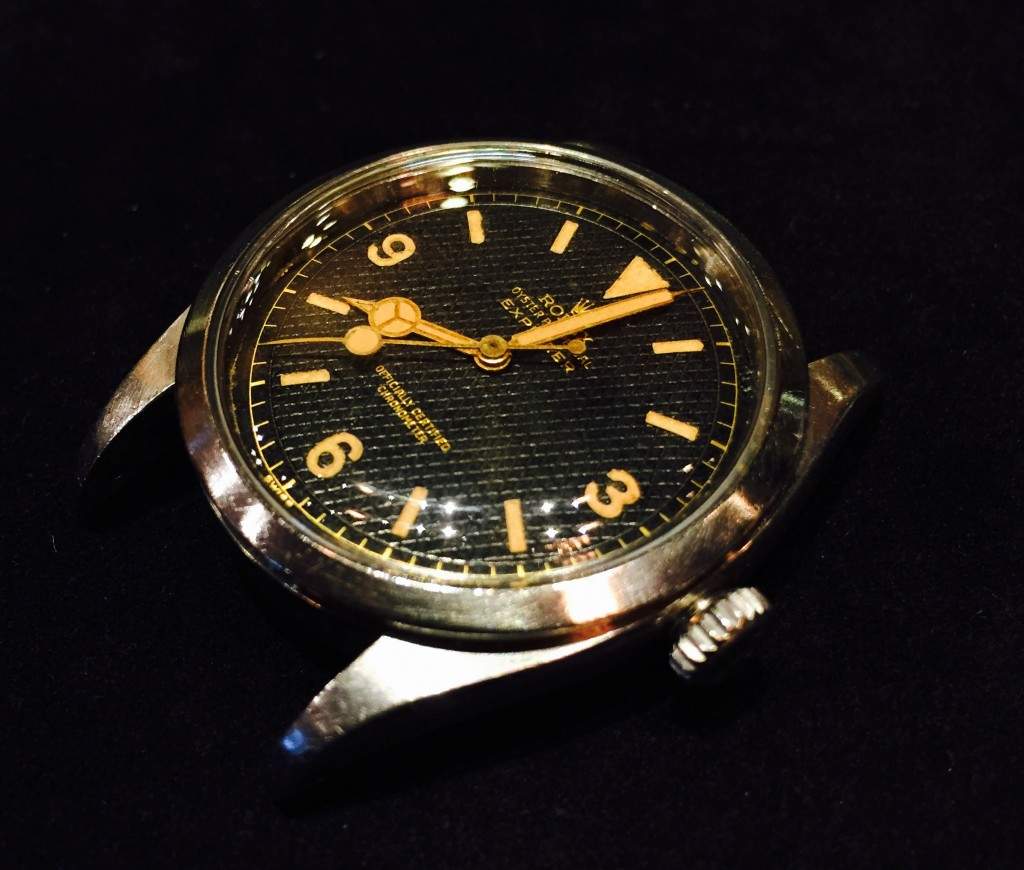
Hands
In terms of hands various versions exist for the 6350.
The most common pair of hands were the elongated minute hand that thinned out in the end and the ‘Mercedes type’ hour hand. These type of hands are the most attractive in our view as other hands existed (see watch below on the right).
It is worth going into detail regarding the hour hand of the 6350. The astute collector will notice that this hour hand is the exact same as the hour in the 6200 and the 6205 – both legendary Submariner models.
The hour hand has a ‘long neck’ causing the tip of the end to stretch further out on the dial. In fact it stretches out so far that the end extends over the hour markers.
Since the 6350 explorer came long before the submariner we believe the inspiration for the Mercedes hands and long hour hand came from the Explorer (for Submariner 6200 hour hand see here* and for the hour hand of the Submariner 6205 see here).
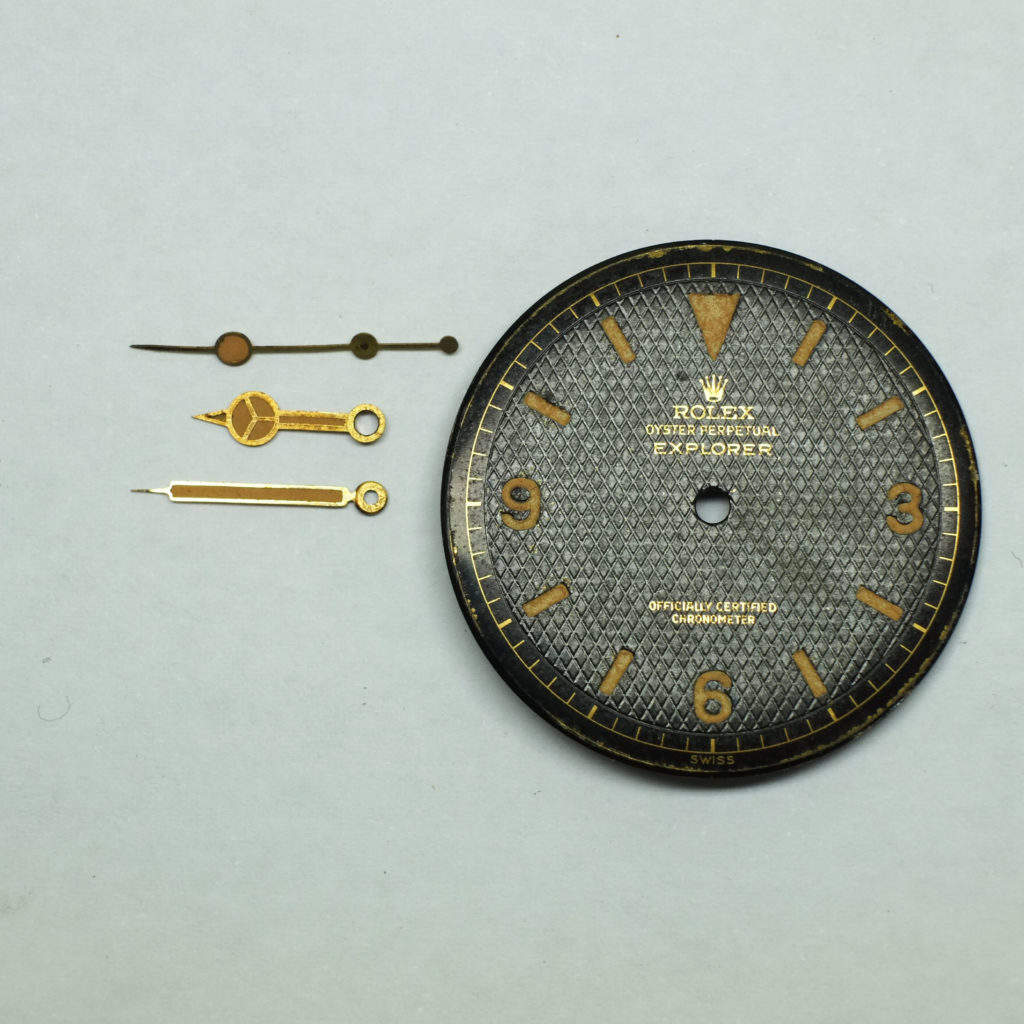
(Credit: Jim Gerber).
Did you notice the similarities in the pictures?
Here is the evidence (as the previous pictures show) that the legendary hands of the Submariner line were inspired by the Explorer.
Some 6350 Explorers carried the ‘pencil’ type hands which appear also to be correct and were available at the time (see right watch on the picture below). Both versions carried gilt hands. As far as the ‘second’s hand is concerned most were the large ‘lollipop’ type second hands that were also found on other Rolex models that came after like the 6205 and the 6200 Submariner – which were introduced a year later.
The other version (the 6350 on the right) with pencil hands carried a different seconds hands which is exactly the same as the 6204 Submariner- the first Rolex submariner which would be introduced a year later in 1954.
In fact, it might be fair to say that the 6350 Explorer was the basis on which Rolex designed the hands of 6204 Submariner.
Both hands of the 6204 and the 6350 are almost identical in some cases (see the 6204 hands here). Both watches below are the 6350, but because of the hands, both models appear to carry a completely different look.
*Credit Philipp Stahl
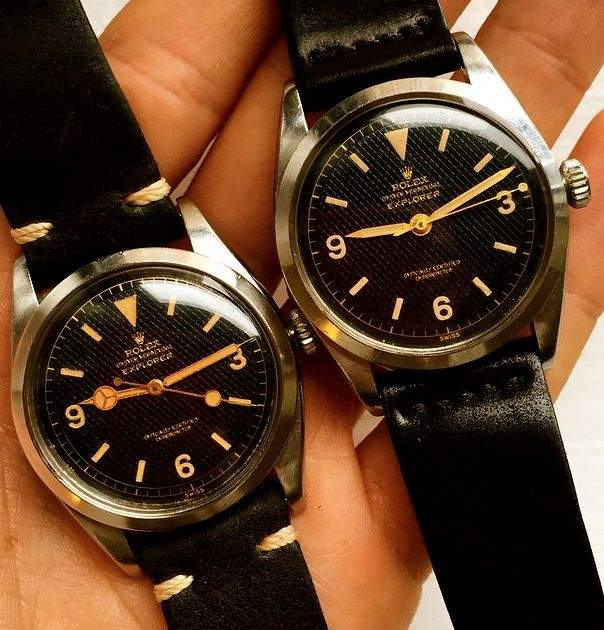
(Credit: Andrew Shear)
Case/ Case back / Movement & Winding crown
The case of the Explorer was robust as the watch was designed for ‘Explorers’.
This meant the watch could withstand extreme temperatures. The case was specially strengthened and uses special lubricant making this watch usable between -20 Celsius and +40 Celsius.
Case of the 6350 Explorer below.

* The movement in the 6350 Explorer is unchanged from the prior model which was the 6150 and carries the A296 movement. Front of the movement.
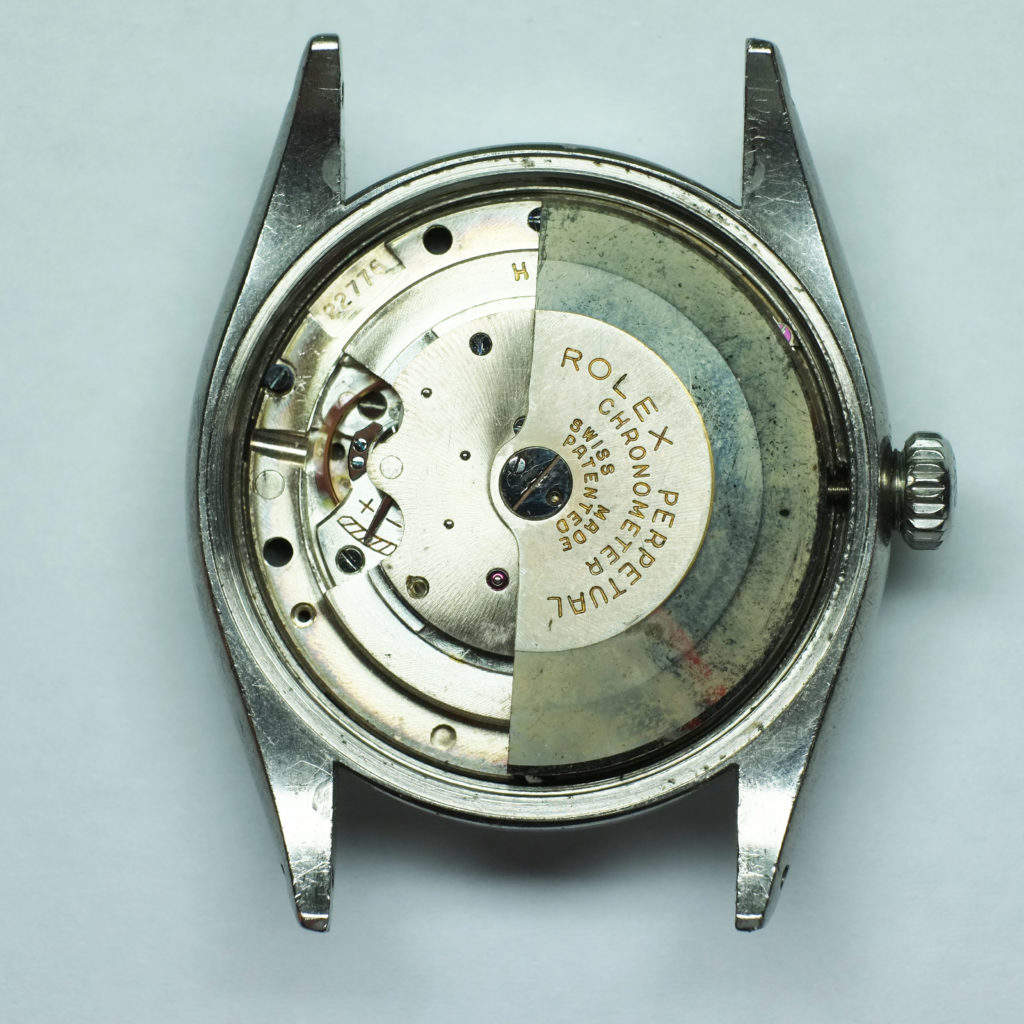
Back of the movement below.
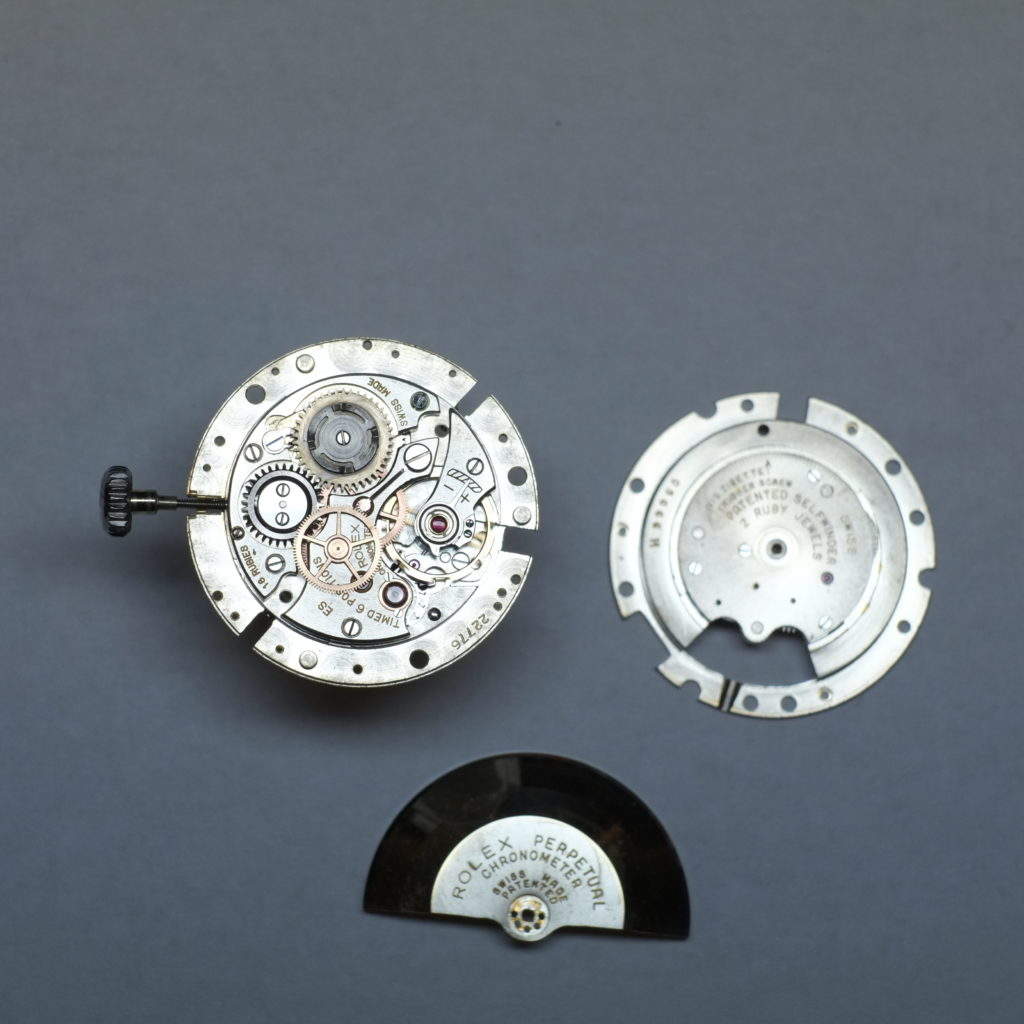
The case back is similar to other early Rolex models.
The ‘Octopus’ type signature near the crown can be found similar to the 6204 and the 6205 submariner models which came only a year later.
As is often the case with Rolex the model number is clearly visible below the Rolex sign along with the period the watch was made (third quarter 1953).
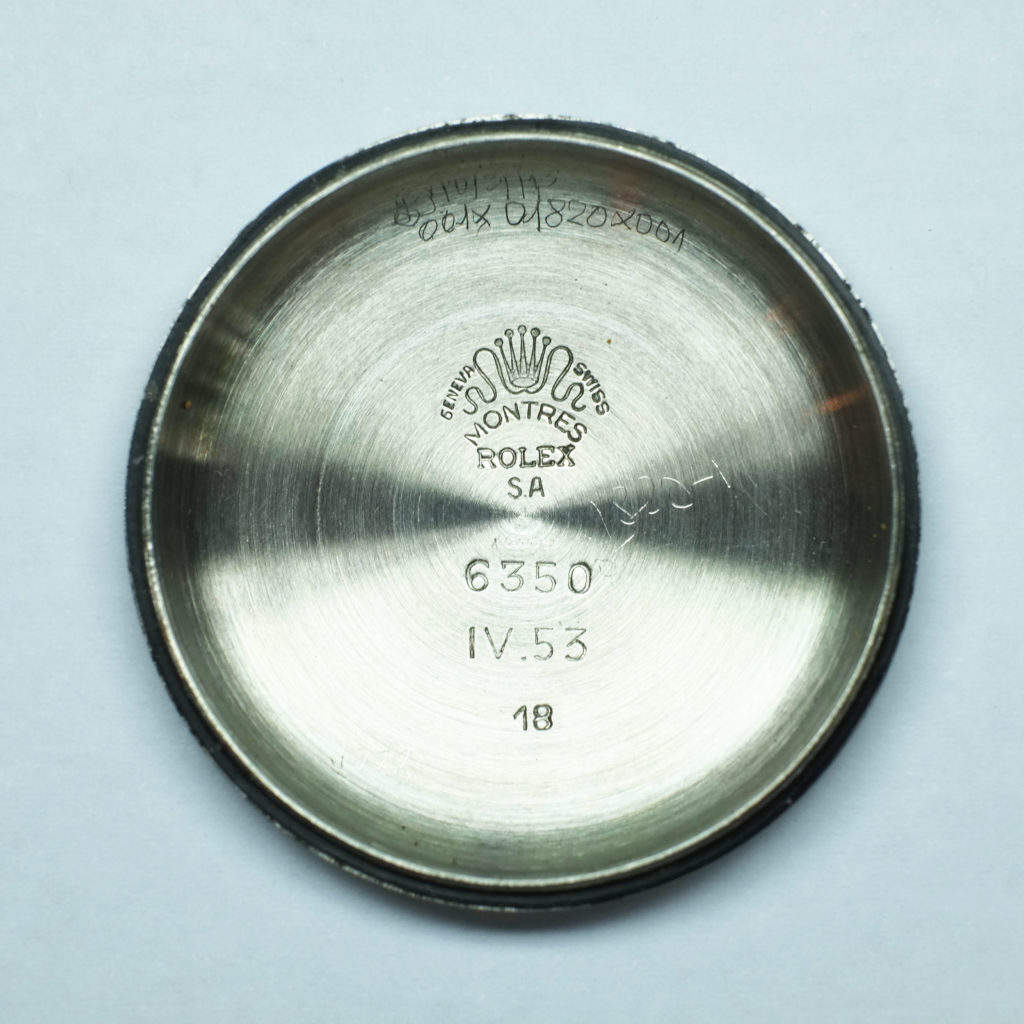
The winding crown like other Rolex models of the period (6204 & 6205) is a Brevet type and should carry the plus sign (+) below the crown as is clearly visible below.
These crowns are rare and most of the time have been lost along the way. Watches that retain the original crown (as this one does) are rare and desirable.

Papers
The 6350 is a chronometer movement and therefore the 6350 would have most likely come with Chronometer papers like the one you see below.
The papers below belonging to the watch was an 6350 Explorer originally purchased in Germany by a Korean War Veteran who also served in the second world war. In the 1950s Mumbai was known as Bombay and Havana was an important market for Rolex – quite unimaginable today.
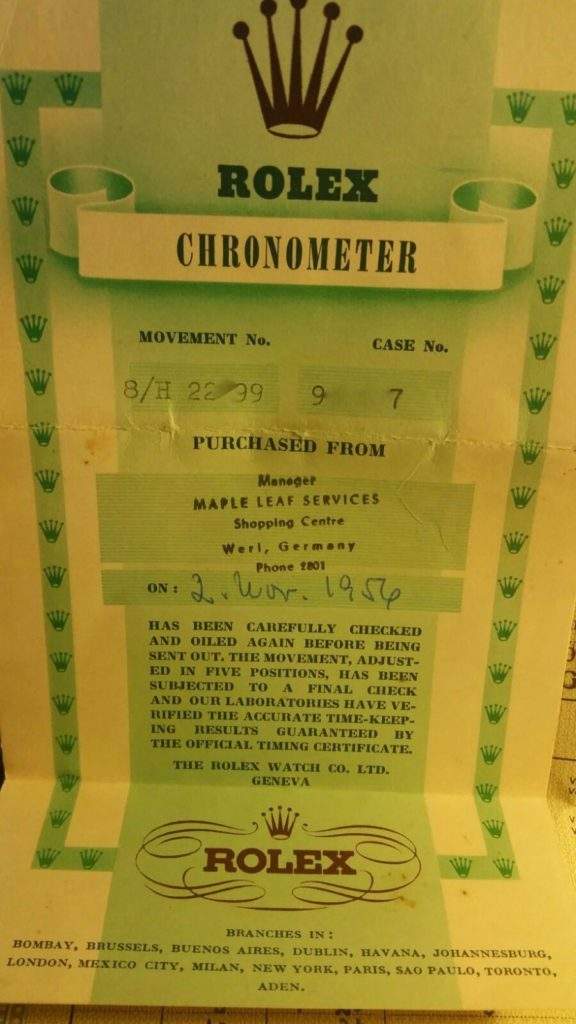
(Credit: SC Song).
Below the Controle de la Marche papers indicating the watch accuracy test was passed by Rolex. It was issued in 1954 and the watch was sold two years later in 1956 (see above).
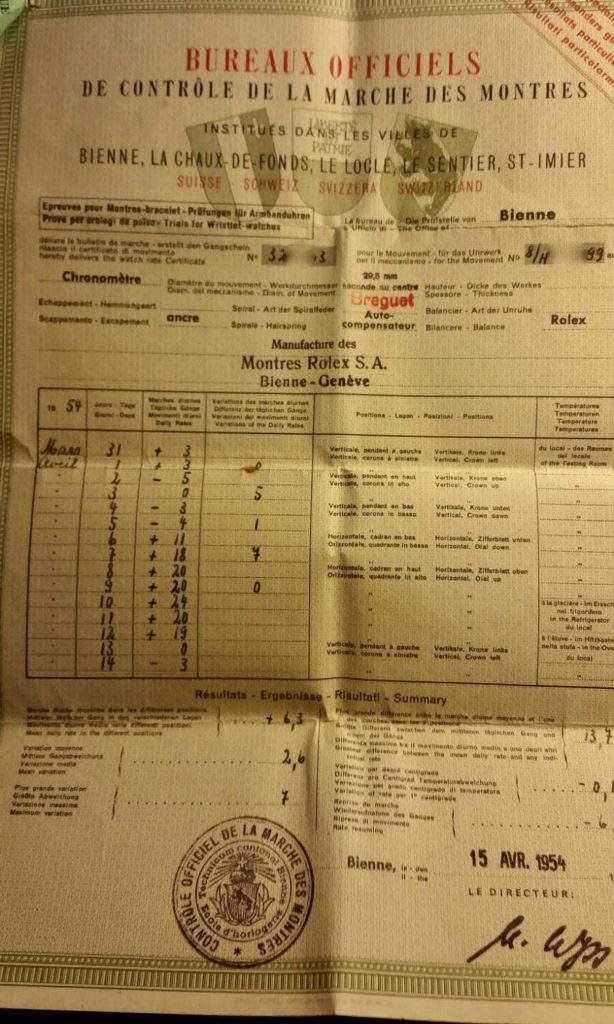
(Credit: SC Song).
Concluding thoughts
The Explorer is clearly in the shadows of the Submariner and GMT line not to mention Daytona. It has been this way for a long time and I don’t see why it would change in a significant way.
The public thinks (perhaps rightly so) that diving and flying is more ‘alluring’ than mountaineering. However collectors should be aware of the significance of the Explorer line not only to Rolex history but its influence on other lines.
The explorer line would leave its mark heavily on the submariner especially with the Arabic Explorer type dial layout being extremely sought after. Think 5513 ‘Explorer dial’ or the 6200 which is an Explorer dial. These watches are among the most sought after in the world and collectors pay large sums to acquire correct examples.
While the 6350 is extremely sought after and collectible (today good examples fetch $70-90′ooo) by comparison to the submariners, the sums are still modest. But collectors are starting to wake up and give the 6350 line in general the credit it deserves. Just recently, a 6350 Explorer honeycomb sold at christies for $70’ooo (and the example was not perfect).
Within the Explorer line there is one undisputed king, just like the 62oo is holy grail within the submariner line. It is the 6350 ‘Honeycomb’ version.
The 6350 honeycomb dial is among the most beautiful watches that were ever made in my opinion.
The watch is pure and timeless. The dial a marvel- a true piece of art. I think it will achieve Iconic status one day – and be considered among the true masterpieces that Rolex has made in the same league as the 6541 Miglauss, the 6200 Submariner, the 6542 GMT Master and the 6263 ‘Panda’ Daytona PN.
It has all the ingredients to become a true Icon. History, rarity and most important of all- beauty. The 6350 honeycomb is destined for great things.
NB: If your interested in how a 6350 Explorer dial gets serviced – please see our service report here.
A in-depth report would not be complete without a wrist- shot of course.
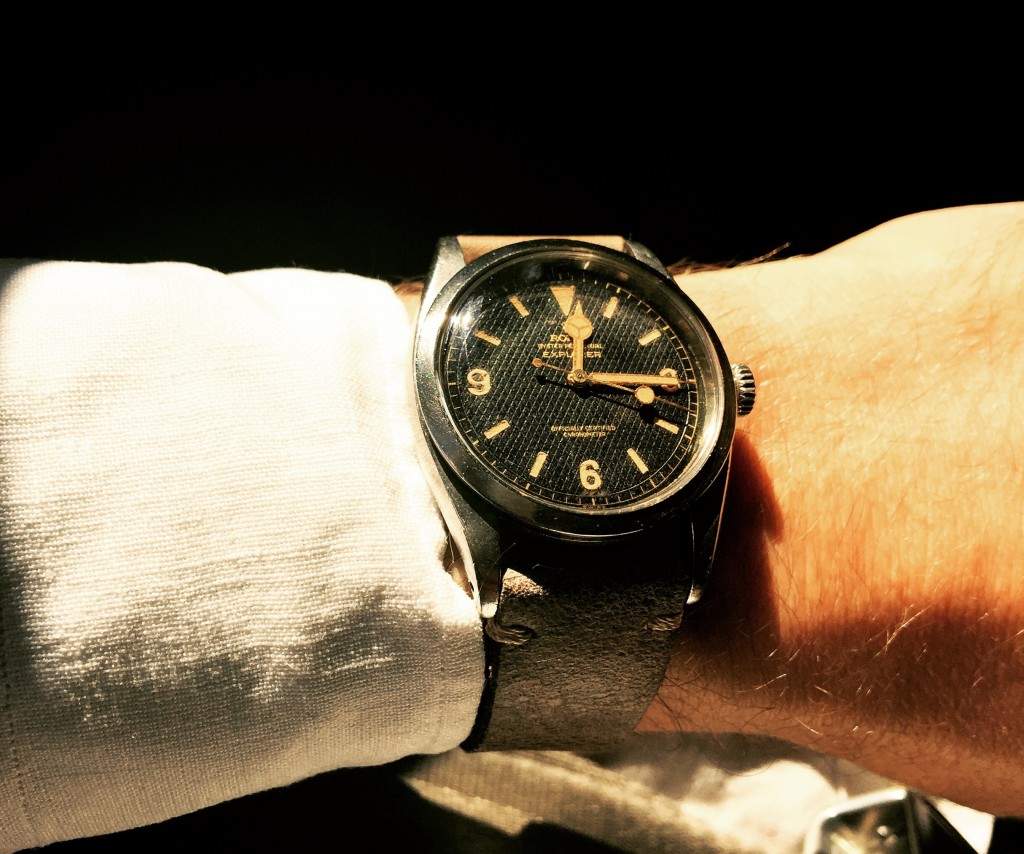
Another wristshot of the 6350 in natural sunlight.
The honeycomb dial is a marvel and among the rarest explorers ever made by Rolex
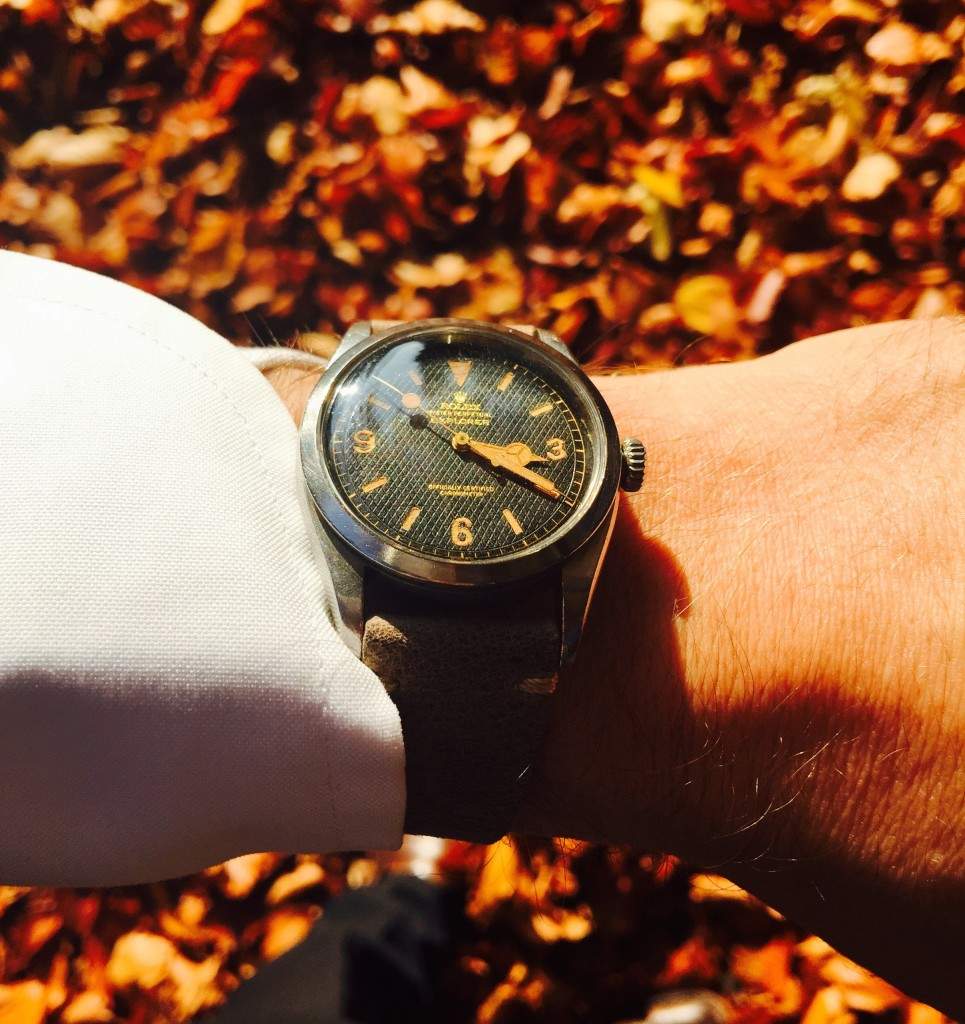
Watches and cigars. What is not to like. Notice the tablecloth and the watch dial both have a similar pattern that is textured.
